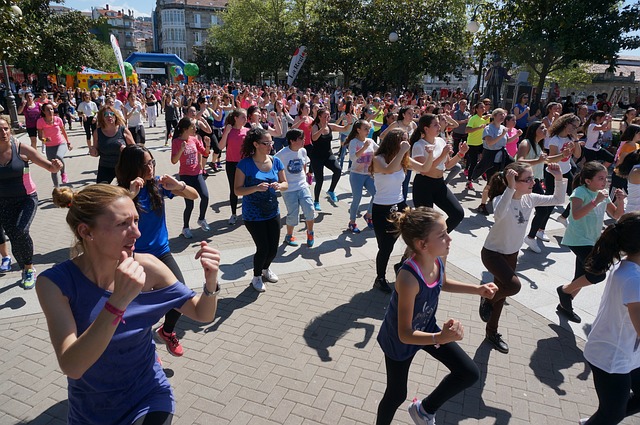Tabata is a high-intensity interval training (HIIT) style of exercise that has gained popularity in recent years. It was developed by Japanese scientist Dr. Izumi Tabata in the 1990s to help train Olympic speed skaters. The Tabata method consists of short bursts of high-intensity exercise followed by brief periods of rest, with the goal of improving cardiovascular fitness and burning calories. In this article, we will explore the benefits of Tabata training, how to do it, and some tips for getting the most out of your workout.
The Benefits of Tabata Training
Tabata training is an effective way to improve cardiovascular fitness, burn calories, and build muscle. The high-intensity nature of Tabata workouts means that they can be completed in a shorter amount of time than traditional steady-state cardio workouts, making them a great option for people who are short on time. In addition to the time-saving benefits, Tabata training can also help improve insulin sensitivity and overall metabolic health.
How to Do Tabata Training
Tabata workouts consist of 20 seconds of high-intensity exercise followed by 10 seconds of rest, repeated for a total of four minutes. This pattern is repeated for a total of eight cycles, resulting in a 16-minute workout. Here are the steps to follow to do a Tabata workout:
- Choose your exercise: Tabata workouts can be done with a variety of exercises, including squats, lunges, push-ups, burpees, and sprints. Choose an exercise that you enjoy and that challenges you.
- Warm-up: Before starting your Tabata workout, it’s important to warm up your muscles and get your heart rate up. A quick jog or a few minutes of jumping jacks can be an effective warm-up.
- Start the timer: Once you’re warmed up, start your timer and begin your first 20-second interval of high-intensity exercise. Push yourself as hard as you can during this time.
- Rest: After the 20-second interval, take a 10-second rest break. Use this time to catch your breath and prepare for the next interval.
- Repeat: Repeat the 20-second interval of high-intensity exercise followed by a 10-second rest break for a total of eight cycles.
- Cool down: Once you’ve completed your Tabata workout, take a few minutes to cool down and stretch your muscles.
Tips for Getting the Most Out of Your Workout
To get the most out of your Tabata workout, here are a few tips to keep in mind:
- Choose the right exercise: Choose an exercise that challenges you and that you enjoy. This will help you stay motivated and engaged during your workout.
- Focus on form: Proper form is important during Tabata workouts to prevent injury and ensure that you’re getting the most out of your exercise.
- Push yourself: Tabata workouts are designed to be high-intensity, so push yourself as hard as you can during each 20-second interval.
- Stay hydrated: It’s important to stay hydrated during your Tabata workout, so drink plenty of water before, during, and after your workout.
- Listen to your body: If you’re feeling tired or lightheaded during your Tabata workout, take a break and rest.
Variations of Tabata Training
While the traditional Tabata workout involves performing one exercise for eight rounds of 20 seconds of work and 10 seconds of rest, there are many ways to modify the protocol to add variety and prevent boredom. Here are some possible variations to Tabata training:
- Exercise selection: Instead of performing one exercise for the entire eight rounds, you can choose two or more exercises and alternate between them. This can be particularly effective if the exercises target different muscle groups.
- Equipment: You can use a variety of equipment to perform Tabata workouts, such as dumbbells, kettlebells, resistance bands, and even bodyweight exercises. Incorporating different equipment can add variety and make the workouts more challenging.
- Rest periods: You can adjust the length of the rest periods to make the workouts easier or harder. For example, you can increase the rest periods to 15 or 20 seconds if you are a beginner, or decrease them to five seconds to make the workouts more intense.
- Work-to-rest ratio: The traditional Tabata protocol involves a 2:1 work-to-rest ratio, but you can adjust the ratio to suit your fitness level and goals. For example, you can perform 30 seconds of work and 15 seconds of rest for a 1:1 ratio, or 45 seconds of work and 15 seconds of rest for a 3:1 ratio.
- Tabata-inspired workouts: There are many Tabata-inspired workouts that incorporate the same work-to-rest ratio but with different exercises and formats. For example, you can perform 20 seconds of work and 10 seconds of rest for four exercises, or 40 seconds of work and 20 seconds of rest for two exercises.
It is important to note that while Tabata training can be an effective and efficient way to improve fitness, it may not be suitable for everyone. If you have any health concerns or are new to exercise, it is recommended to consult a healthcare professional before starting a Tabata workout or any new exercise routine.
Conclusion
Tabata training is a highly effective way to improve cardiovascular fitness, burn calories, and build muscle. By following the steps outlined above and incorporating Tabata workouts into your fitness routine, you can achieve your fitness goals in less time than traditional steady-state cardio workouts. However, it’s important to remember to push yourself but also listen to your body and stay hydrated. With dedication and consistency, Tabata training can help you achieve your fitness goals and improve overall health.
Photo by Ketut Subiyanto
Fitness
-

How to Hydrate Properly for Muscle Health
Proper hydration is crucial for overall health and plays a vital role in supporting muscle function and development. Muscles are composed of a significant amount of water, and maintaining adequate hydration levels is essential for optimizing muscle performance, preventing muscle cramps, and supporting muscle recovery. In this article, we explore the link between hydration and…
-

Try Aerobics for Overall Health, Fitness, and Fun
-

Mindful Running: How to Incorporate Mindfulness and Mental Focus into Your Running Routine
-

Proper Running Form and Techniques – How to Boost Your Performance and Prevent Injuries
-

How to Start Running Today for Health and Fitness
-

Unleashing Your Strength: Exploring Resistance Training and Its Various Types
-

How to Build Muscle Mass – From Strength Training to Protein-Rich Foods









Leave a Reply